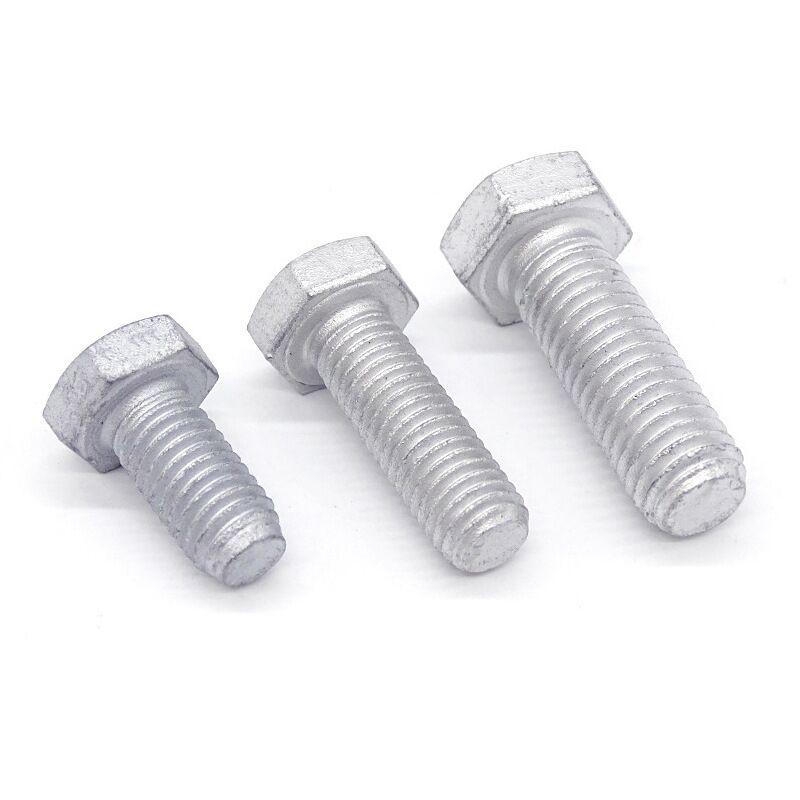The Essential Guide to Hex Nut Specifications
In the world of fasteners and hardware components, hex nuts play a crucial role in countless applications across industries. These six-sided marvels of engineering might seem simple at first glance, but understanding their various sizes and grades is fundamental to ensuring proper assembly, safety, and longevity of mechanical connections. Whether you're working on a small DIY project or managing industrial equipment maintenance, knowing how to select the right hex nuts can make the difference between a secure connection and potential failure.
From construction sites to automotive assembly lines, hex nuts are ubiquitous fastening components that require careful consideration of their specifications. The variety of hex nuts available on the market today reflects their diverse applications, with each size and grade serving specific purposes under different conditions. Let's delve into the intricate world of these essential fasteners and explore what makes them so versatile.
Understanding Hex Nut Size Classifications
Metric vs. Imperial Measurements
The world of hex nuts is divided into two primary measurement systems: metric and imperial. Metric hex nuts are measured in millimeters and are commonly used in Europe, Asia, and most international markets. The sizing typically ranges from M2 to M64, with the 'M' denoting metric followed by the nominal diameter. Imperial or standard hex nuts, prevalent in the United States and some Commonwealth countries, use inches for measurement and are typically designated as fractions, such as 1/4", 1/2", or 3/4".
Understanding these measurement systems is crucial when selecting hex nuts for specific applications. Mixing metric and imperial hex nuts with incompatible bolts can lead to improper fit and potential safety hazards. Professional engineers and craftsmen often maintain separate toolsets for each system to ensure precise installations.
Width Across Flats and Height Specifications
The width across flats (WAF) is a critical dimension for hex nuts, determining the size of wrench or socket needed for installation. This measurement is taken from one flat side to the opposite flat side of the hexagonal shape. The height of hex nuts also varies according to their size and grade, with some applications requiring specific height tolerances for proper fitting in restricted spaces.
Thread pitch and internal diameter are equally important specifications that must match the corresponding bolt or threaded rod. Fine-thread and coarse-thread options are available for most sizes, each offering distinct advantages in different applications. Fine threads provide better tension control and resistance to vibration, while coarse threads are easier to start and less prone to cross-threading.
Material Grades and Strength Classifications
Standard Grade Classifications
Hex nuts are manufactured in various grades that indicate their strength and performance characteristics. The most common system in North America uses numbered grades such as Grade 2, 5, and 8, while the metric system employs property class numbers like 8.8 or 10.9. These classifications directly correlate to the nut's tensile strength and intended usage scenarios.
Grade 2 hex nuts are suitable for general-purpose applications with low stress requirements. Grade 5 represents medium-strength fasteners commonly used in automotive applications. Grade 8 hex nuts offer the highest strength among standard grades and are essential for heavy machinery and high-stress applications.
Material Composition and Treatment
The material composition of hex nuts significantly influences their performance characteristics. Steel is the most common base material, but variations in alloy content and heat treatment create distinct properties. Stainless steel hex nuts offer superior corrosion resistance, while brass hex nuts are valued for their non-magnetic properties and aesthetic appeal.
Surface treatments and coatings provide additional protection against environmental factors. Zinc plating, hot-dip galvanization, and various chemical treatments enhance corrosion resistance while maintaining the nuts' dimensional accuracy and structural integrity. Some specialized applications may require exotic materials like titanium or Inconel for extreme temperature or chemical exposure conditions.
Application-Specific Considerations
Industry-Specific Requirements
Different industries have developed specific standards and requirements for hex nuts based on their unique challenges. The aerospace industry, for instance, demands precision-manufactured hex nuts with strict material certifications and traceability. Construction applications often require heavy-duty hex nuts capable of withstanding substantial loads and environmental exposure.
Automotive manufacturers typically specify particular grades and finishes of hex nuts that meet their quality standards and assembly requirements. Marine applications demand corrosion-resistant options, while food processing equipment requires stainless steel hex nuts that comply with sanitary standards.
Environmental Factors
The operating environment plays a crucial role in hex nut selection. Temperature extremes can affect material properties, while exposure to chemicals or moisture may necessitate specific coating or material choices. High-vibration environments might require specialized locking features or thread designs to prevent loosening.
Consideration must also be given to maintenance accessibility and replacement schedules. Some applications may benefit from using hex nuts with integrated washers or other features that simplify installation and maintenance procedures while ensuring consistent performance.
Frequently Asked Questions
How do I determine the correct size hex nut for my application?
To select the right hex nut size, first identify the bolt or threaded rod diameter and thread pitch. Use a thread gauge to confirm the threading pattern, and ensure you're working within the same measurement system (metric or imperial). Consider the space constraints and torque requirements of your application when selecting the appropriate width across flats and height specifications.
What's the difference between fine and coarse thread hex nuts?
Fine thread hex nuts have more threads per inch (or millimeter) than coarse thread versions. Fine threads provide better tension control and resistance to vibration loosening, making them ideal for precision applications. Coarse threads are more commonly used for general purposes and are less susceptible to cross-threading during installation.
How do I prevent hex nuts from loosening in high-vibration environments?
Several strategies can help secure hex nuts in vibration-prone applications. Consider using lock nuts with nylon inserts, split lock washers, or thread-locking compounds. For critical applications, implementing proper torque specifications and regular maintenance checks is essential. Some specialized hex nuts feature deformed threads or other mechanical locking features designed specifically for high-vibration environments.

